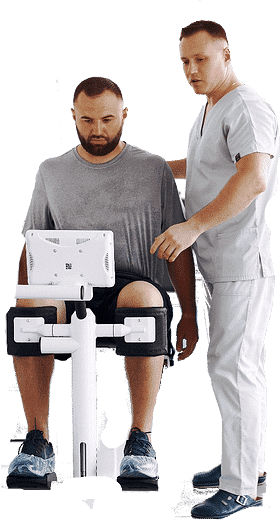What is Neurological Physiotherapy Techniques
Call Us: +91-9421750231, +91-7875411115.

What is Neurological Physiotherapy?
Neurological physiotherapy involves the treatment of individuals with movement and performance disorders that have originated from problems within the body’s nervous and neuromuscular system.
These conditions often manifest themselves as muscle weakness, poor balance, and coordination, uncontrolled spasm, and tremors, loss of function, and decreased sensation.
By focusing on all aspects of a person’s functional independence and well-being, Neurorehabilitation offers a series of therapies from medications, physiotherapy, and speech and swallow therapy, psychological therapies, occupational therapies, teaching or re-training patients on mobility skills, communication processes, and other aspects of that person’s daily routine. Neurorehabilitation also provides focuses on nutrition, psychological, and creative parts of a person’s recovery.
COMMON Neurological treatment methods
Your content goes here. Edit or remove this text inline or in the module Content settings. You can also style every aspect of this content in the module Design settings and even apply custom CSS to this text in the module Advanced settings.

COMMON Neurological TECHNIQUES INCLUDE
Manual therapy effectively addresses the mechanical, biochemical, and psychological qualities of the treatment process. You’re expected to visualize a far better range of motion in stiffer joints and pain relief by improving how your brain processes pain signals. one among your body’s main systems that control pain is activated by specific muscle movements, which suggests that manual therapy can help ease in what proportion pain you experience.
SOME TECHNIQUES ARE:
- ICING
- Proprioceptive Neuromuscular Facilitation
- Neurodevelopmental treatment(NDT)
- Muscle Energy Technique (MET
- STRETCHES (MUSCLE, NEURAL TISSUE, JOINTS, FASCIA)
- INSTRUMENT ASSISTED SOFT TISSUE MOBILIZATION
- JOINT MANIPULATION
- JOINT MOBILISATION
TECHNIQUES

ICING
Ice can be used to facilitate a response from muscle. Ice uses a combination of coolness and pain sensations to produce the desired response.
In order to facilitate a motor response, an ice cube is quickly swept over the chosen muscle belly

Proprioceptive Neuromuscular Facilitation
Proprioceptive Neuromuscular Facilitation (PNF) is a stretching technique utilized to improve muscle elasticity and has been shown to have a positive effect on active and passive range of motions.
What does a PNF stretch consist of? There are three PNF methods: the contract-relax method (CR), the antagonist-contract method (AC), and a combination of the two – contract-relax-antagonist-contract (CRAC). CR involves contracting, holding, releasing and stretching the target muscle.

Neurodevelopmental treatment
Neurodevelopmental treatment is based on the premise that the presence of normal postural reflex mechanisms is fundamental to a motor skill’s performance. The normal postural reflex mechanisms consist of righting and equilibrium reactions, reciprocal innervation, and coordination patterns.

Muscle Energy Technique (MET
Muscle Energy Technique (MET) is a technique that was developed in 1948 by Fred Mitchell, Sr, D.O. It is a form of manual therapy, widely used in Osteopathy, that uses a muscle’s own energy in the form of gentle isometric contractions to relax the muscles via autogenic or reciprocal inhibition and lengthen the muscle.

STRETCHES (MUSCLE, NEURAL TISSUE)
A physiotherapeutic passive activity in which a specific nerve, muscle, or group of muscle is deliberately stretched in the opposite direction of its activities(both directions in neural tissue) to improve the muscle’s flexibility( in neural tissue a compression) and achieve comfortable muscle tone or in nerve better conduction. The result can show an increase in muscle control, flexibility, decrease in neurological pain, and relative joint range of motion.

INSTRUMENT ASSISTED SOFT TISSUE MOBILIZATION
Instrument Assisted Soft Tissue Mobilization is a set of handheld instruments we use to break down the scar tissue and fascial restrictions in your soft tissues. This includes your muscles, ligaments, tendons, nerves and fascia. Scar tissue can develop from surgery or overuse. This can limit your nerve conduction and blood flow. It can result in improper function, decreased range of motion and pain.

JOINT MANIPULATION
A manual physiotherapy technique during which a passive movement is applied to a joint with small amplitude and in an exceedingly quick fashion. this is often also referred to as high-velocity, low-amplitude thrust manipulation. Many are conversant in the manipulation of the spine, but, “peripheral”, or joints faraway from the spine, are often manipulated also. Both of those areas are often useful in treating a variety of injuries and are often utilized in conjunction with one another.

JOINT MOBILISATION
Joint mobilization is a manual therapy intervention, a type of straight-lined, passive movement of a skeletal joint that addresses arthrokinematic joint motion rather than osteokinematic joint motion. It is usually aimed at a ‘target’ synovial joint with the aim of achieving a therapeutic effect. reference
FREQUENTLY ASKED QUESTIONS
WHAT IS Neurological Physiotherapy?
Neurological physiotherapy involves the treatment of individuals with movement and performance disorders that have originated from problems within the body’s nervous and neuromuscular system
WHAT ARE THE TYPES OF MANUAL THERAPY?
SOME TECHNIQUES ARE:
- ICING
- Proprioceptive Neuromuscular Facilitation
- Neurodevelopmental treatment(NDT)
- Muscle Energy Technique (MET
- STRETCHES (MUSCLE, NEURAL TISSUE, JOINTS, FASCIA)
- INSTRUMENT ASSISTED SOFT TISSUE MOBILIZATION
- JOINT MANIPULATION
- JOINT MOBILISATION
WHAT MAKES YOU BETTER THAN OTHER PHYSIOTHERAPISTS?
you’ll benefit from a prompt flexible service. That includes a professional assessment and diagnosis followed by a tailor-made rehabilitation program suited to your individual needs. They have extensive experience, working both in clinics and Physiotherapists’ home visits.
How much does a session of Manual therapy cost?
The average cost of a physiotherapy session is 600 – 700 Rs. This is the average across Pune. The cost of a physiotherapy session can be as low as 500 Rs. as manual therapy is also included in the session you don’t need to pay any extra cost for manual therapy.
How do you know if you need physiotherapy?
If you had a particularly hard day at the gym, you would feel sore afterward. But if your pain is persistent and not getting any better, that is a sure sign that you need to see a physiotherapist. Likewise, mobility and movement are reasonably constant for a person. Sure, with age they change, but not overnight.
WHAT SHOULD I EXPECT ON FIRST VISIT ?
Our Physiotherapists will try to understand what your goals are, they will explain how they will assess you and ask for your consent before they start. After the assessment, the physiotherapist will explain what physiotherapy can help you with, how long it might take, and the expected outcome from the treatment.
